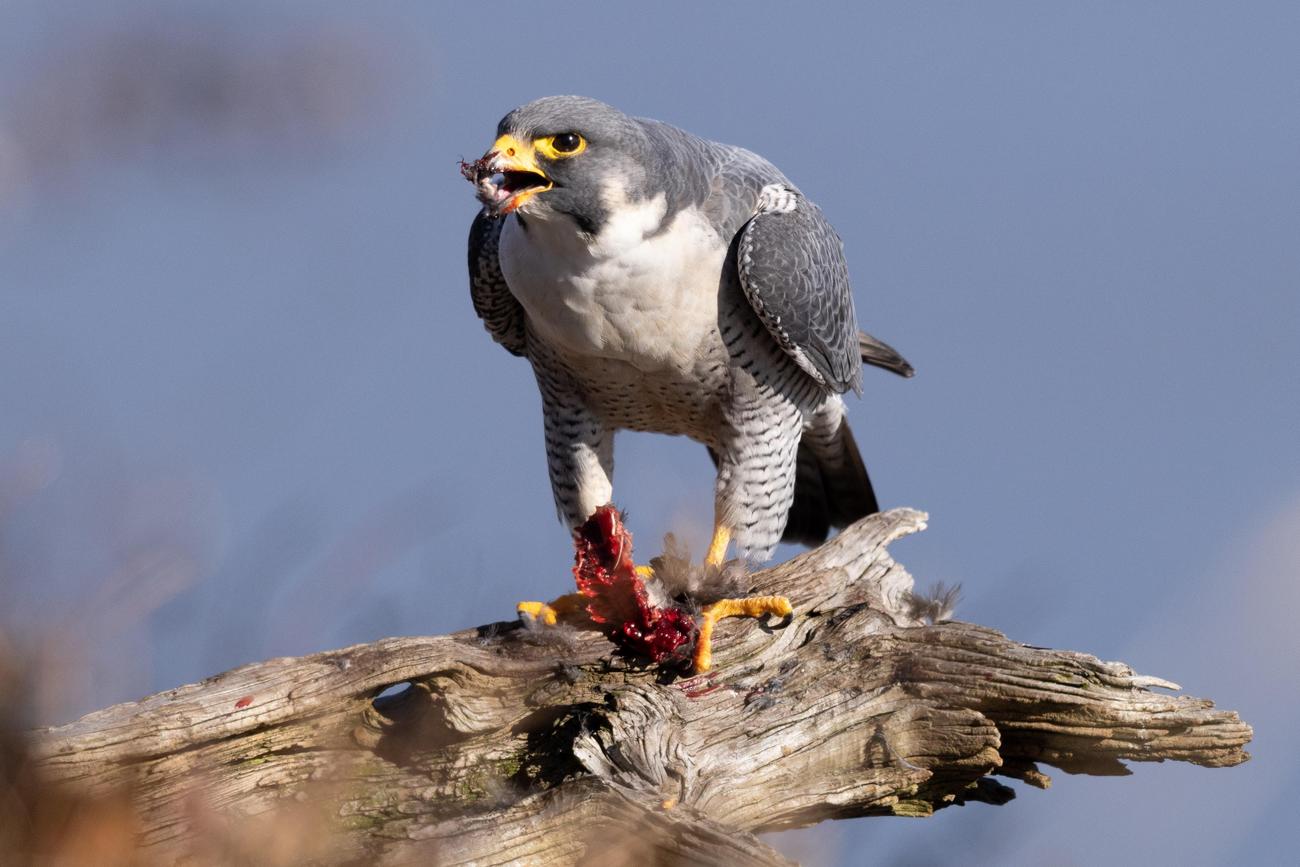Welcome to a captivating journey into the intriguing wonders of the spine, where we delve into the realm of fun facts and uncover the astonishing marvels hidden within this extraordinary anatomical masterpiece. Brace yourself for a spine-tingling adventure as we unravel the secrets of this captivating structure, exploring its awe-inspiring capabilities and uncovering fascinating tidbits that will leave you spellbound. Get ready to be amazed as we embark on a voyage through the spine’s intricate structure, its unique functions, and the surprising abilities that make it a true wonder of the human body.

Fun Facts About the Spine
As an avid enthusiast of orthopedics and an experienced healthcare professional, I am thrilled to share some captivating and intriguing fun facts about the spine. Brace yourself for a journey into the remarkable wonders of this complex anatomical masterpiece!
1. The Human Spine: The Central Nervous System’s Main Hub
The spine serves as the primary hub of the central nervous system, connecting the brain to the rest of the body. This intricate network of bones, ligaments, and discs is responsible for transmitting electrical signals, allowing us to move, feel, and engage with the world around us.
Can you believe that the spine acts as our body’s information superhighway? It’s truly awe-inspiring!
2. The Spine’s Independent Operation
Contrary to popular belief, the spine doesn’t solely rely on the brain’s commands to function. It possesses its own set of reflexes and can work independently, even without direct input from the brain. This remarkable autonomy allows quick reactions to stimuli, safeguarding our bodies from potential harm.
Imagine a symphony where the spine’s reflexes are the talented soloist, performing intricate movements without direction from the conductor – the brain. How fascinating!
3. The Spine’s Control: Voluntary and Involuntary Movements
Not only does the spine enable our voluntary movements, such as walking and dancing, but it also controls involuntary movements, like regulating our heartbeat and digestion. This dual function showcases the spine’s exceptional versatility and its critical role in maintaining our overall health and well-being.
Isn’t it amazing to think that the spine is the maestro orchestrating both the grand gestures and the subtle rhythms of our body’s movements?
4. Delicate yet Mighty: The Thinness of the Spinal Cord
Despite its vital role in transmitting lightning-fast messages between the brain and the body, the spinal cord itself is not particularly thick. In fact, it measures only about half an inch in diameter. This thin, delicate structure showcases the spine’s incredible efficiency at relaying information with precision.
The spinal cord may be slender, but its impact on our daily lives is immeasurable. Truly, size doesn’t define strength!
5. The Spine’s Grey and White Matter
The spine harbors both grey and white matter, just like the brain. Grey matter is responsible for processing information, while white matter acts as the transmitters, ferrying signals between different parts of the body. Excitingly, this similarity highlights the fundamental connection between the brain and the spine.
Grey and white matter come together in a beautiful dance, choreographed by the spine, enabling seamless communication throughout our body’s intricate systems.
6. Early Development: Completion of the Spinal Cord’s Growth
Did you know that the growth of the spinal cord is completed by the tender age of five? During early development, the spine rapidly matures, ensuring its readiness to support our movements and protect our delicate nerves. It’s a testament to the miraculous process of human growth and development.
In just a few short years, our spines transform from fragile saplings to sturdy pillars, built to accompany us throughout our lives. Nature’s wonders never cease to amaze!
7. The Spine’s Remembrance of Pain
Our spines possess an astonishing ability to “remember” pain. Experiences of chronic pain or trauma can leave lasting imprints on the spine, altering its sensitivity and responsiveness. This phenomenon showcases the spine’s adaptability and its role in shaping our perception of pain.
Pain leaves a mark, not just on our minds but also on the very structure that supports us. It’s a testament to the profound connection between our bodies and experiences.
8. An Ever-Changing Structure: Fusion of Vertebrae
At birth, we start with 33 individual vertebrae in our spine. However, as we age, some of these vertebrae fuse together, resulting in fewer movable segments. This natural fusion enhances stability but reduces flexibility. It’s a beautiful reminder of the spine’s adaptability and its evolution over time.
Our spines undergo a metamorphosis, transforming from a mosaic of individual pieces into a harmonious composition, providing us with stability and support as we journey through life.
9. Necks Made Equal: Giraffes and Humans
Surprisingly, both humans and giraffes share the same number of neck bones – seven in total. Despite the stark differences in our physiques, this intriguing similarity highlights the underlying similarities in the evolution of our skeletal structures.
Who would have thought that our spine’s neck bones would mirror those of these magnificent creatures? It’s a remarkable testament to the intricate design of life on Earth.
10. The Role of Car Accidents in Spinal Injuries
Tragically, a significant number of spinal cord injuries are caused by car accidents. The sudden impact and forces involved can lead to severe damage to the delicate spinal cord, resulting in life-altering consequences. This highlights the importance of safe driving practices and the need for continued research and advancements in spinal injury treatment.
Vigilance on the road is paramount, as even a split second can forever change the course of someone’s life. Let’s work together to create a safer world for everyone.
In conclusion, the spine is a truly remarkable wonder of the human body. From its role as the central nervous system’s main hub to its autonomy, versatility, and incredible adaptability, the spine embodies the essence of our physicality. These fun facts offer a glimpse into the captivating world of the spine, leaving us in awe of its complexity and the miracles it performs every day.
So, the next time you marvel at your ability to move, remember to pay homage to your spine, the unsung hero working tirelessly behind the scenes to support, protect, and empower you with its fascinating wonders.
Remember, knowledge is power, and embracing the marvels of the spine sheds light on the incredible resilience and ingenuity of our bodies.
Fun facts about the spine will leave you amazed and wanting to learn more about the incredible intricacies of our bodies. Did you know that the neck plays a crucial role in supporting the weight of our heads? Discover some fascinating Fun Facts About The Neck, and you’ll be surprised by the hidden secrets it holds. Take a dive into the world of nerves and uncover Fun Facts About The Nerves that will make you appreciate the incredible network that allows us to feel and move. Are you ready for a challenge? Test your knowledge with Spine Trivia Questions and prepare to be amazed by the incredible facts about our spine. Let’s not forget about our backs! Explore some lesser-known Facts About Backs and delve into the amazing structure that provides support and protection for our bodies. Have you ever wondered about the impact of spinal cord injuries? Explore Interesting Facts About Spinal Cord Injury and gain insight into the incredible resilience of the human body. And last but not least, let’s explore Fun Facts About The Lumbar Spine – the lower back region that plays a vital role in our everyday movements. With each link, a new world of fascinating knowledge awaits. So, don’t hesitate – click away and uncover the secrets of our remarkable spine!
Fun Facts About The Neck
Fun Facts About The Nerves
Spine Trivia Questions
Facts About Backs
Interesting Facts About Spinal Cord Injury
Fun Facts About The Lumbar Spine
Fun Facts About the Spinal Cord
The spinal cord is an incredible part of our body, with its own set of intriguing wonders to explore. Join me as we delve into some fun facts about the spinal cord that will leave you amazed at its complexity and capabilities.
1. The spinal cord is an intricate network of nerves:
Think of the spinal cord as the superhighway of nerves running through your body. It serves as the main headquarters of the peripheral nervous system, connecting the brain to different parts of the body. With 43 pairs of sensory and motor nerves, it orchestrates voluntary movements like standing up and involuntary actions like breathing. The spinal cord’s role in transmitting messages between the brain and the body is truly remarkable.
Did you know? The spinal cord holds the power to control a wide range of movements, from delicate finger dexterity to powerful leg kicks. It’s like the conductor of an orchestra, harmoniously coordinating the complex symphony of our body’s actions.
2. The spinal cord is compact and mighty:
Measuring just .4 to .6 inches in thickness, the spinal cord may seem small compared to the vastness of the human body, but it packs a punch. It is responsible for relaying crucial sensory information and coordinating motor responses, making split-second reactions possible. Despite its slender size, the spinal cord plays a vital role in our everyday movements and bodily functions.
Fun Fact Alert! The spinal cord is like a thin yet incredibly efficient cable that carries messages between the brain and the rest of the body. Its compact nature showcases the brilliance of nature’s design.
3. The spine and giraffes share a surprising similarity:
Imagine reaching to touch your neck and counting the bumps along your spine. You would probably find seven, right? Well, guess what? Giraffes have the same number of neck bones as us, seven cervical vertebrae. This astonishing similarity between humans and these majestic creatures is not just a coincidence; it’s a fascinating fact worth pondering.
Think about it: Despite the tremendous difference in neck length, both humans and giraffes have adapted and evolved with the same number of neck bones. It’s a beautiful reminder of the interconnectedness of all living beings.
4. Cartilage is the spine’s spongy superhero:
Did you know that more than a fourth of the overall length of your spine is made up of cartilage? Yes, that’s right! Cartilage acts as a cushion or a sponge-like substance between each vertebra, providing flexibility and shock absorption. It allows the spine to bend and move while minimizing the impact on the delicate spinal cord.
Just like a well-designed shock absorber, cartilage protects our spine from the daily wear and tear, allowing us to move and twist without feeling the strain on our spinal cord. It’s like having a built-in bodyguard for our precious nerves!
5. The spine holds memories of pain:
Here’s a fascinating fact that will make you ponder the interconnectedness of our body and mind. The spine has the ability to “remember” pain, especially chronic pain. When we experience pain, our spinal cord undergoes changes that can lead to hypersensitivity and altered perception of pain. It’s a remarkable example of how our body can adapt and respond to the challenges it encounters.
It’s incredible to think that the spine carries the memory of pain, reminding us of the journeys we have traveled and the challenges we have overcome. Our spine narrates our unique story through the imprints of pain it holds.
In conclusion,
The wonders of the spinal cord never cease to amaze. From its role in coordinating movements to its ability to remember pain, the spinal cord is a testament to the intricacy and brilliance of the human body. Next time you stretch your back or feel a twinge of discomfort, take a moment to appreciate this remarkable anatomical wonder that resides within you.
As we unravel the mysteries of the spinal cord, we come to realize that the wonders of the human body run deep. The spine, with its fascinating fun facts, invites us to marvel at the incredible complexity of our anatomy and to appreciate the interconnectedness of mind, body, and soul.
Fun Facts about Dinosaurs with The Spine
[youtube v=”NJRB1uPGVn0″]
The Tyrannosaurus Rex – A Well-Represented Dinosaur
The tyrannosaurus rex, often referred to as T-rex, is one of the most well-known dinosaurs. It was a large theropod species that lived on an island continent known as Laramidia, which is now western North America. This fearsome predator was a dominant presence during its time.
“The species tyrannosaurus rex, often called t-rex, is one of the most well-represented of the large theropods.” – The Spine
The Ankylosaurus – A Armored Dinosaur
Another fascinating dinosaur is the ankylosaurus, which belongs to a group of armored dinosaurs. Fossils of this creature have been discovered in western North America, dating back to the very end of the cretaceous period, about 68 to 66 million years ago. The ankylosaurus was one of the last non-avian dinosaurs to exist.
“Here’s a favorite ankylosaurus, it’s a type of armored dinosaur. Its fossils have been found in geological formations dating to the very end of the cretaceous period.” – The Spine
The Surprising Gaming PC
Now, we come to a unique favorite dinosaur – your gaming PC! Though not a dinosaur in the traditional sense, the Spine humorously refers to gaming PCs as dinosaurs. According to him, these machines struggle with graphically intense games like solitaire and mine sweeper.
“Here’s another favorite dinosaur… your gaming PC! Built sometime in the late jurassic period, your gaming PC struggles with graphically intense games like solitaire and mine sweeper.” – The Spine
A Fun and Humorous Take on Dinosaurs
In the “Fun Facts with The Spine” video, the Spine from the band Steam Powered Giraffe shares some amusing insights about dinosaurs. With his humorous commentary, he lightens the mood during challenging times. The video provides an entertaining way to learn and appreciate these ancient creatures.
“Eh, I’m just having fun, bye bye now.” – The Spine
By presenting these fun facts about dinosaurs, The Spine adds a touch of humor and entertainment to our understanding of these ancient creatures. So whether it’s the mighty tyrannosaurus rex, the armored ankylosaurus, or the humorous comparison with gaming PCs, each fact brings us closer to the world of dinosaurs.

FAQ
Q: How thick is the human spinal cord?
A: The human spinal cord is just .4 to .6 inches thick.
Q: At what age does the human spinal cord stop growing?
A: The human spinal cord stops growing at the age of five, and after that, the body grows around it.
Q: How many neck bones do humans and giraffes have in common?
A: Both humans and long-necked giraffes have seven cervical vertebrae.
Q: What is the role of cartilage in the spine?
A: Cartilage makes up over a fourth of the overall length of the spine and serves as the vertebrae’s sponge-like substance that separates one disc from the next.
Q: Does the spine hold memories of pain?
A: Yes, the spine holds memories of pain.
- Identify Black and White Snakes: Venomous or Harmless? - April 20, 2025
- Unlocking Potential: Origins High School’s NYC Story - April 20, 2025
- Period Quiz: Predict Your First Period - April 20, 2025















